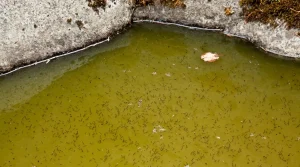67 Climate Change and Zoonotic Risk
The climate crisis directly influences the emergence and spread of zoonotic diseases (World Health Organization 2023). Rising temperatures, changing precipitation patterns, and extreme weather events shift ecosystems, affecting the distribution and behavior of vectors like mosquitoes, ticks, and fleas (Zoonotic Diseases and Emerging Health Threats 2023). For example, diseases like Lyme disease and West Nile virus have expanded into new geographic regions due to warming climates that support longer transmission seasons and greater host-vector interaction (Emerging and Reemerging Infectious Dis

eases 2016). Climate-related events such as floods, droughts, and habitat destruction also increase the likelihood of human-wildlife contact (World Health Organization 2023). When natural habitats are lost, wild animals often move closer to human settlements in search of food and shelter. This proximity increases the chance of zoonotic spillover (World Health Organization 2023). (E.B.)
Moreover, livestock are vulnerable to climate-related stress, which can lower immunity and increase their susceptibility to infection. This raises the risk of transmission to humans (Siedner et al. 2020). Adapting public health efforts to climate trends is now essential in zoonotic disease mitigation (World Health Organization 2023). Furthermore, climate change is also altering the behavior of animals and humans alike. People displaced by climate events may settle in areas previously uninhabited, increasing the likelihood of exposure to new wildlife and potential disease reservoirs. Insect populations can shift to higher altitudes and latitudes, exposing new populations to diseases like malaria and dengue (Zoonotic Diseases and Emerging Health Threats 2023). (E.B.)
